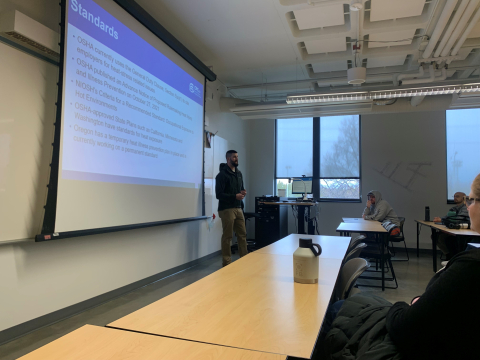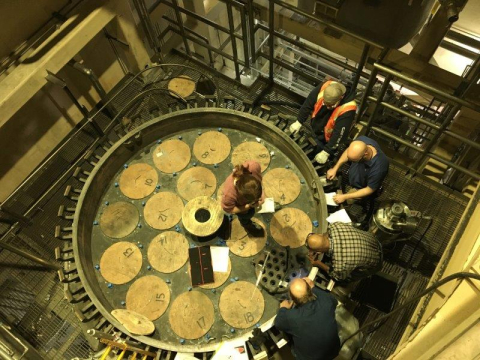
A former EM intern is hoping to parlay her experience at the DOE Idaho National Laboratory (INL) Site this past summer into a full-time career, joining her parents in the profession of industrial hygiene.
For decades, the nuclear industry has used remotely operated drones to photograph building exteriors and take radiation measurements safely.

An intern supporting EM at the Idaho National Laboratory Site this summer touted his hands-on experience in the field as beneficial to understanding the dynamic nature of his intended profession.

DOE and an association that helps worksites advance safety and health goals last week awarded several cleanup contractors across the EM complex.
EM crews at the Idaho National Laboratory (INL) Site are making significant progress to reduce risk through two projects involving spent nuclear fuel in support of a 1995 agreement with the State of Idaho.
In the era of the COVID-19 pandemic, the EM program at the Idaho National Laboratory (INL) Site recently filmed a virtual video tour of its facilities as an alternative to in-person visits.
When preparing to use heavy equipment to decontaminate and demolish (D&D) Cold War-era buildings and structures, EM's cleanup contractor at the DOE Idaho National Laboratory (INL) Site believes practice makes perfect.
Engineers and operators supporting the Integrated Waste Treatment Unit (IWTU) at the DOE Idaho National Laboratory (INL) Site have taken the facility to new heights in its recently completed confirmatory run.
As a twentysomething operations technician, Mark Henderson thought he would work in the Transuranic Storage Area-Retrieval Enclosure (TSA-RE) at DOE’s Idaho National Laboratory (INL) Site for his entire career.

The Idaho National Laboratory Site continues to make progress toward the start of radiological operations at the plant that will treat roughly 900,000 gallons of liquid waste,

